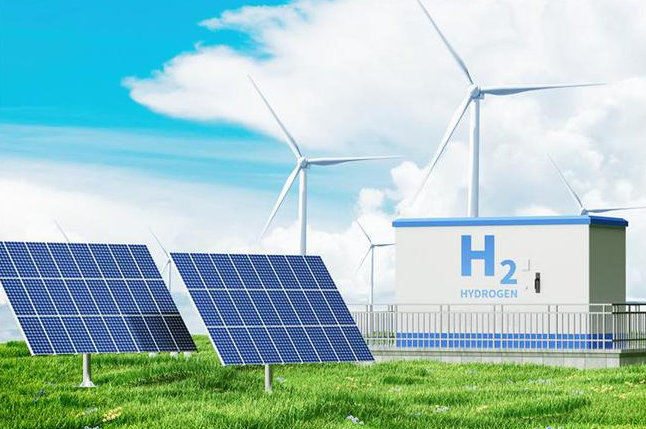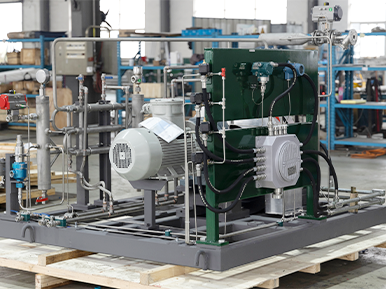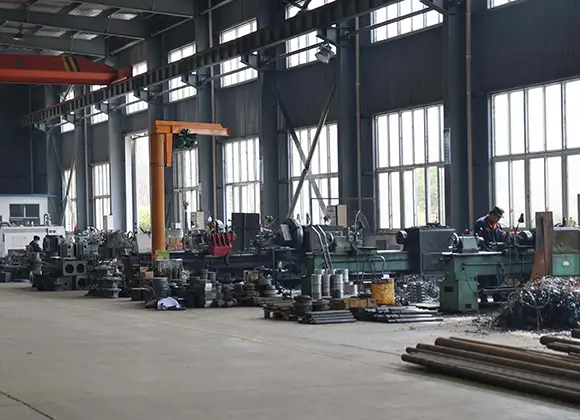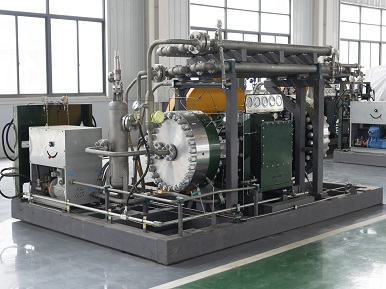

Green hydrogen refers to hydrogen produced by splitting water molecules into hydrogen and oxygen using electricity from renewable sources. This process, known as electrolysis, generates no polluting emissions, making green hydrogen the cleanest and most sustainable form of hydrogen. The use of renewable energy sources such as wind or solar power ensures that the production of green hydrogen remains environmentally friendly.
Hydrogen can be categorized based on its production methods:
Green Hydrogen: Produced using renewable electricity to split water molecules. This method generates zero carbon emissions.
Gray Hydrogen: Produced from natural gas through steam methane reforming, which releases significant amounts of CO2 into the atmosphere.
Blue Hydrogen: Also produced from natural gas but incorporates carbon capture and storage (CCS) technology to reduce CO2 emissions.
Gray hydrogen remains the most common type currently produced. However, the demand for clean hydrogen is projected to rise, leading to a decline in gray hydrogen production by 2050. Blue hydrogen production is expected to be concentrated in regions with cost-competitive natural gas and CCS infrastructure.
The electrolysis process involves passing an electric current through water to separate it into hydrogen and oxygen. This method requires an electrolyzer, which consists of two electrodes (anode and cathode) submerged in water. When electricity flows through the electrodes, hydrogen gas forms at the cathode, and oxygen gas forms at the anode. The purity of the hydrogen produced depends on the efficiency of the electrolyzer and the quality of the input water.
Renewable energy sources play a crucial role in the production of green hydrogen. Solar panels and wind turbines generate the electricity needed for the electrolysis process. The use of renewable energy ensures that the entire production cycle of green hydrogen remains carbon-neutral. This makes green hydrogen a key player in the transition to a sustainable energy future.
Technological advancements continue to improve the efficiency and cost-effectiveness of green hydrogen production. Innovations in electrolyzer design and materials have led to higher efficiency rates and lower energy consumption. Large-scale projects and investments in research and development aim to make green hydrogen production more competitive with fossil fuel-derived hydrogen. Countries like Japan and Australia are leading efforts to commercialize green hydrogen, showcasing its potential for global adoption.

Green hydrogen production generates zero carbon emissions. Electrolysis, powered by renewable energy sources, splits water into hydrogen and oxygen without releasing pollutants. This clean process helps reduce the overall carbon footprint. Heavy industries can adopt green hydrogen to replace fossil fuels, significantly lowering their carbon emissions.
Green hydrogen plays a crucial role in climate change mitigation. The adoption of green hydrogen reduces greenhouse gas emissions, helping to meet global climate targets. Countries with abundant renewable resources, such as Australia, lead in green hydrogen projects. These efforts showcase the potential of green hydrogen to combat climate change effectively.
The green hydrogen industry has the potential to create numerous jobs. The development of green hydrogen plants and infrastructure requires skilled labor. Countries investing in green hydrogen projects can expect job growth in engineering, manufacturing, and maintenance sectors. Government funding, like the DOE's support for hydrogen hub projects, further boosts job creation.
Green hydrogen finds applications across multiple industries. The transportation sector uses green hydrogen for fuel cells, providing a sustainable alternative to gasoline and diesel. Energy storage systems benefit from green hydrogen's ability to store excess renewable energy. Industries well-poised for conversion to green hydrogen include steel, cement, and chemical manufacturing. These sectors can reduce their reliance on fossil fuels and lower emissions.
Green hydrogen helps reduce dependence on fossil fuels. By utilizing renewable energy sources, countries can decrease their fossil fuel imports. This shift enhances energy security and promotes a more sustainable energy mix. Regions with abundant renewable resources, such as wind and solar, can produce green hydrogen locally, reducing the need for imported energy.
Green hydrogen enhances energy security by diversifying energy sources. Countries can produce green hydrogen domestically, reducing vulnerability to geopolitical tensions. The ability to store and transport green hydrogen adds flexibility to the energy grid. This ensures a stable and reliable energy supply, even during periods of high demand or supply disruptions.
Green hydrogen production faces significant technological challenges. The efficiency of the electrolysis process remains a critical issue. Current electrolyzers convert only a portion of the input energy into hydrogen. This inefficiency results in higher energy consumption and increased costs. Researchers continue to work on improving electrolyzer designs to enhance efficiency.
The cost of production also poses a barrier. Green hydrogen production requires substantial amounts of renewable electricity. The cost of renewable energy has decreased, but the overall expense of producing green hydrogen remains high. Large-scale deployment of green hydrogen technology will require further cost reductions. Investments in research and development aim to achieve this goal.
Storing and transporting green hydrogen presents additional challenges. Hydrogen has a low energy density by volume, making storage difficult. Compressed hydrogen storage tanks and liquid hydrogen storage systems exist, but both options have limitations. Compressed hydrogen storage requires high-pressure tanks, which can be expensive and bulky. Liquid hydrogen storage involves cryogenic temperatures, adding complexity and cost.
Transportation of hydrogen also requires specialized infrastructure. Pipelines designed for natural gas cannot always accommodate hydrogen due to its small molecular size. Hydrogen can cause embrittlement in certain materials, leading to potential safety risks. Developing a robust hydrogen transportation network will necessitate significant investments and technological advancements.
The initial investment costs for green hydrogen projects are substantial. Building electrolysis plants, renewable energy facilities, and storage infrastructure requires significant capital. These high upfront costs deter many potential investors. Government funding and incentives can help offset these expenses. Programs like the Infrastructure Investment and Jobs Act provide financial support for clean hydrogen initiatives.
Long-term economic viability depends on reducing production costs. Achieving economies of scale through large-scale projects can help lower costs. Collaboration between public and private sectors will be essential to drive down expenses and make green hydrogen competitive with fossil fuels.
Supportive policies and regulations play a crucial role in the adoption of green hydrogen. Governments must implement policies that encourage investment in green hydrogen technologies. Incentives such as tax credits, grants, and subsidies can stimulate growth in the sector. Regulatory frameworks should also address safety standards, environmental impact, and market integration.
International cooperation can enhance policy effectiveness. Countries can share best practices and collaborate on research and development. Global initiatives, such as the U.S. National Clean Hydrogen Strategy and Roadmap, highlight the importance of coordinated efforts. These strategies aim to align national policies with global decarbonization goals.

Researchers continue to explore new methods to enhance green hydrogen production. Universities and private companies invest heavily in improving electrolyzer efficiency. Advanced materials like proton exchange membranes (PEMs) and solid oxide electrolyzers show promise. These materials could reduce energy consumption and increase hydrogen yield.
Innovations in renewable energy integration also play a crucial role. Researchers develop hybrid systems combining solar, wind, and hydropower with electrolysis. These systems aim to provide a stable and continuous supply of electricity for hydrogen production. The goal is to make green hydrogen more cost-effective and scalable.
Potential breakthroughs in technology could revolutionize green hydrogen production. Artificial intelligence (AI) and machine learning (ML) optimize the electrolysis process. AI algorithms analyze data to improve operational efficiency and reduce costs. ML models predict maintenance needs, minimizing downtime and extending the lifespan of equipment.
Nanotechnology offers another avenue for innovation. Nanomaterials enhance the catalytic properties of electrodes, increasing reaction rates. This leads to higher hydrogen production rates and lower energy requirements. Researchers also explore bio-inspired catalysts, mimicking natural processes to achieve greater efficiency.
International efforts and agreements drive the global adoption of green hydrogen. The European Union (EU) launched the European Green Deal, aiming to become climate-neutral by 2050. The EU invests in large-scale green hydrogen projects and cross-border collaborations. Countries like Germany and the Netherlands lead these initiatives.
The United Nations (UN) also plays a pivotal role. The UN's Sustainable Development Goals (SDGs) emphasize clean energy and climate action. Member states commit to reducing carbon emissions and promoting renewable energy. Green hydrogen aligns with these goals, offering a viable solution for decarbonization.
Governments and the private sector both contribute to the growth of green hydrogen. Government policies and incentives encourage investment in green hydrogen technologies. Tax credits, grants, and subsidies make projects financially viable. Regulatory frameworks ensure safety and environmental standards.
The private sector drives innovation and commercialization. Companies like Siemens and Toyota invest in research and development. These companies develop advanced electrolyzers and fuel cell technologies. Public-private partnerships accelerate the deployment of green hydrogen infrastructure. Collaboration between stakeholders ensures a coordinated approach to achieving sustainability goals.
Green hydrogen stands as a critical component in the global transition to clean energy. The potential impact on the global energy landscape is immense. Green hydrogen could fulfill nearly a quarter of worldwide energy needs by 2050. This shift will create new jobs, technologies, and markets. Green hydrogen's ability to store and transfer energy without emitting harmful pollutants makes it essential for a sustainable future. Further research and investment are necessary to overcome current challenges. Governments and private sectors must collaborate to unlock green hydrogen's full potential.




